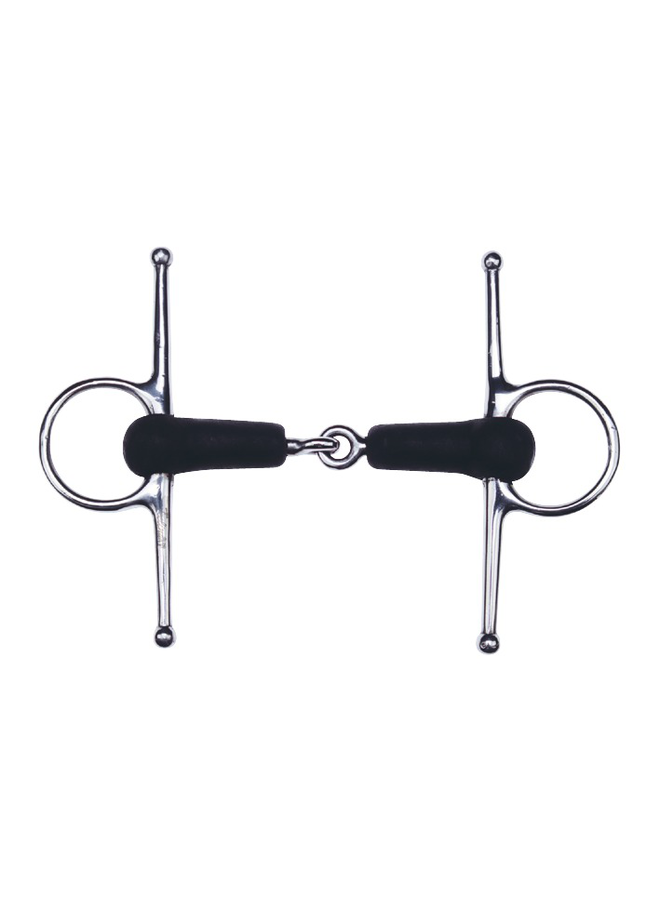Product description
Full cheek:
- The side pieces of a full cheek have 2 bars on the side and therefore cannot be pulled through the mouth.
- These bars create more pressure on the horse's cheeks, which makes maneuverability easier.
- A full cheek is stable and quiet in the mouth, ideal for training young horses.
- Depending on the type, thickness and material, a full cheek is given a sharper or softer effect.
Full Cheek Loops:
- To make a full cheek even more effective, a full cheek loop can be attached to the cheek piece of the bridle on either side of the bit.
- The end of the top bar is pushed through this.
- Leverage is created by using these loops.
- Prevents the bars from getting caught under the noseband of the bridle.
Single Jointed
- A single jointed bit has a hinge point in the middle that puts pressure on the lips, layers and sides of the tongue. A single jointed bit squeezes the tongue slightly under pressure and puts less pressure on the tongue.
- A single jointed bit rises slightly in the middle and can sting the palate. In this case is it better to choose a double-jointed or straight mouthpiece.
- A single jointed bit is a good basic bit, suitable for many horses and riders.
Rubber & plastic bits:
- A rubber bit can be flexible, but also can contain a hard core. The flexible rubber bit has a steel wire running through is, so the bit can not break. The flexible bit is softer.
- Black rubber has the disadvantage that if a horse has a drier mouth, the bit gets hot by friction and then can burn on the tongue. When a horse produces enough saliva, a rubber bit is the softer variant of a metal bit. The plastic variant is smoother and doesn’t have this problem.
Reviews
Recent articles

Feeling
Full cheek jointed rubber
£30.59

Trust Equestrian
Inno Sense Pelham Port Medium 20mm
£157.48

Trust Equestrian
Inno Sense 2½ Ring Flexi Soft 20mm
£96.25

Metal AB
3-Ring Pessoa Double Jointed
£52.46

Poponcini
Eggbutt
£174.15


